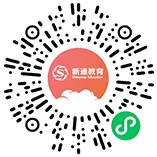新通托福口语高分素材库出炉啦!新通教育为帮助广大托福考生突破托福口语瓶颈,提高托福口语成绩,特地精心整理了托福口语高分范例。快来新通托福口语高分素材库学习托福口语技巧吧!
Liatening Part:
Now listen to part of a talk in an Education class.
(female professor)
One of the hardest parts of teaching is keeping your students’ attention. Now, the key to doing this is understanding the concept of attention. Basically, there are two types of attention. The first type is active, active attention is voluntary. It’s when you intentionally make yourself focus on something. And since it requires effort, it’s hard to keep up for long a time. OK, so, um, let’s say you are teaching a Biology class. And today’s topic is frogs. All right? You’re standing in front of the room lecturing: a frog is a type of animal known as an amphibian…, well, this isn’t necessarily going to keep the students’ interest. But most of them will force themselves to pay active attention to your lecture. But it’s only a matter of time before they get distracted.
Now, the other type of attention is passive attention, when it’s involuntary. Passive attention requires no effort because it happens naturally. If something is really interesting students don’t have to force themselves to pay attention to it. They do it without even thinking about it. So back to our Biology lecture, you start talking about frogs and then you pull a live frog out of your briefcase. You’re describing it while holding it up. Show the students how long its legs are, and how they’re used for jumping, for example. Then maybe even let the frog jump around a bit on the desk or the floor. In this case, by doing something unexpected, something more engaging, you can tap into their passive attention. And it can last much longer than active attention. As long as the frog is still there your students will be interested.
Question:
Using points and examples from the talk, explain the difference between active and passive attention.
Listening keys:
(1.1) Main idea: active and passive attention.
(1.2) Active attention: forced.
(1.2.1) Example.
(1.2.1.1) A teacher teaches a class by only reading from textbooks.
(1.2.1.2) Students will get bored, yet they’d still try to focus.
(1.2.1.3) But they will get distracted soon because this attention is forced.
(1.3) Passive attention: happens naturally.
(1.3.1) Example.
(1.3.1.1) A teacher teaches with a live frog, let it jump around a bit.
(1.3.1.2) Students get interested in what’s happening, their concentration happens naturally.
(1.3.1.3) As long as the frog is on the table, students will have no problem focusing on the lecture.
Sample Answers:
范文一:
The professor talks about two kinds of attention in the lecture. The first type is active attention which is voluntary. For example, if a biology teacher teaches a class by only reading from a textbook, the class can become fairly boring. Most students would force themselves to focus, but sooner or later, the students will be distracted. The second type of attention is passive attention, let’s say instead of reading from a textbook, the teacher pulls a live frog out of his bag, then the lecture becomes really interesting. As long as the frog is on the table, the students will be able to focus on the lecture.
范文二:
Active attention is that we intentionally pay attention to something, so it’s voluntary. Since it requires efforts, it won’t last very long. Passive attention is involuntary and lasts longer than active attention. In the lecture, the professor uses a biology class as an example. Suppose I am the teacher of the class and the topic is about frog. If I walk into the classroom and stand on the podium saying “Frog is a kind of animal…” , the students will force themselves to pay attention to my words but this active attention won’t last long. The students will be distracted sooner or later. However, if I take a live frog with me and show it to the students while talking about it, the students will be interested and will involuntarily pay attention to my class. So by taking something unexpected, I make the class engaging and tap into the students’ passive attention.
托福口语学习难?点击下方,在线老师教你托福口语高分技巧哦!
咨询时间:8:00~24:00
 400-618-8866
400-618-8866
咨询时间:8:00~24:00
扫一扫
立即报名

扫一扫
立即进站

想要获取更多考试培训信息,可以通过以下方式联系到距离您最近的新通教育;
1、拨打新通教育咨询热线:400-618-8866;
2、点击【立即咨询】 ,我们会有课程老师为你解答考试难题;
3、完成以下表单,轻松预约,预约获取定制学习方案的机会。